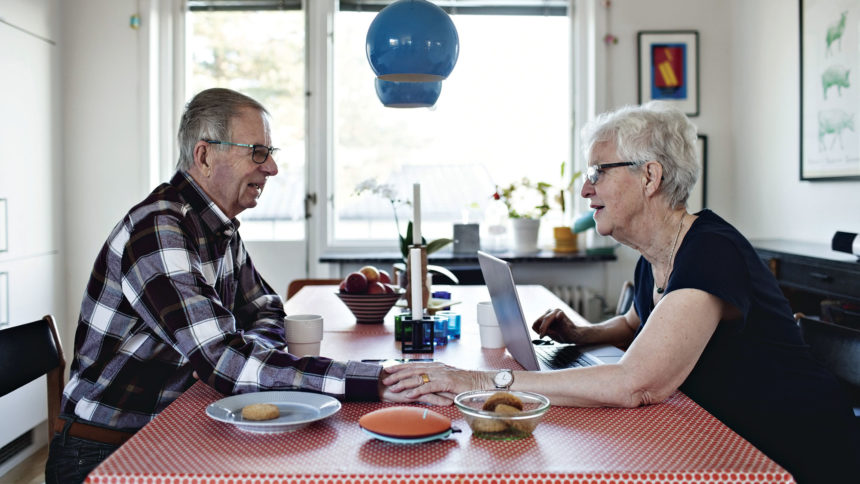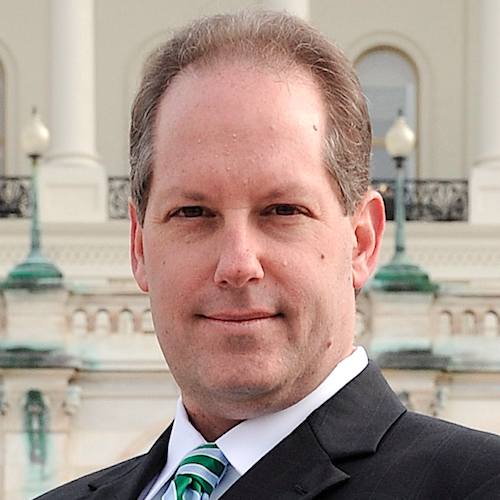
Senior living operators are using a balanced, data-driven approach to reopening communities during the COVID-19 pandemic by continuously assessing risk, mitigating transmission and monitoring progress while considering their unique markets and communities, according to a new special issue brief issued by the American Seniors Housing Association.

“Balancing Seniors Housing Residents’ Safety As Communities Reopen: A Strategic Approach to the COVID-19 Pandemic,” prepared by Washington, DC-based research and advisory services firm ATI Advisory and its CEO, Anne Tumlinson, presents the results of case studies and interviews across the industry. The brief reveals how seniors housing operators are gradually restoring resident engagement, reintroducing visitation and enabling new move-ins while taking a strategic public health approach to balance multiple competing priorities and risks.
ASHA President David S. Schless said the brief was written for both policymakers and operators. The key pieces, he said, include focusing on what’s happening at the local level, where communities are located; testing; and reintroducing the benefits of senior living to prospective residents and their families.

“You’ve got to really be monitoring that all the time, because it’s changing,” Schless told McKnight’s Senior Living. “It really dictates how you consider opening the communities up safely to family members, visitors and potentially new residents as well.”
Finding an accessible testing mechanism that can rapidly return results will be a “game changer,” he said. Frequent, widespread and consistent testing is the best practice for reopening safely, the report states, but operators will need assistance from policymakers and regulators with testing costs and logistics, as well as priority access.
“There is no easy answer for when and how much to loosen highly restrictive protocols,” Tumlinson said in a news release, “especially when residents, staff, families and states often have differing opinions about risk tolerance and desire for safety. However, given that long-term isolation poses grave risks to residents as well, the industry is moving ahead proactively to prepare for and manage COVID-19 transmission risk in a long-term non-zero risk environment.”
Schless said ASHA members have told him that they are implementing a variety of protocols but that the pieces they need to focus on include personal protective equipment, sanitation and cleaning, testing and what’s happening in local communities.
With safety as the overriding priority of efforts to date, operators have relied on quarantine-like protocols, including strict visitor restrictions and minimal resident interaction with staff and other residents. But they recognize that prolonged isolation, lack of engagement and loneliness can contribute to cognitive decline, as well as depression and anxiety, he said.
“Now operators must manage a new challenge — a long period of risk management through which they cannot rely solely on safety-first strategies without impacting resident well being,” Schless said. “Seniors housing operators are moving forward with carefully constructed, strategic and proactive plans to balance these demands and meet the individual needs of residents.”
Many companies have been thinking about this challenge for the past two to three months, Schless said, so ASHA partnered with ATI to compile a document.
“We hope it’s helpful to folks,” he said.
The special issue brief is available at no charge for ASHA members and may be purchased via ASHA’s website.
In other coronavirus-related news:
- Dallas County Medical Examiner Jeffery Barnard said the coronavirus pandemic has slowed the process of amending death certificates of older adults who were victims of Billy Chemirmir, a serial murder suspect who allegedly smothered his victims at senior living communities. Before prosecutors can take each case to a grand jury for an indictment against Chemirmir, the medical examiner’s office must re-investigate the case and amend each victim’s death certificate.
- A $20 million class action lawsuit in Ontario has been filed on behalf of several senior living and care residents who had COVID-19. The lawsuit alleges that the Village of Erin Meadows retirement community and its corporate parent, Schlegel Villages, did not ensure that residents and staff were kept safe, failed to comply with provincial directors to prevent the spread of COVID-19, and did not equip employees with personal protective equipment in a timely manner.
- Conflicting COVID-19 messages create a cloud of confusion around public health and prevention, according to researchers, and senior living operators are not immune from the effects. Independent groups, including NewsGuard and Hacock’s Stanford Social Media Lab, have launched projects meant to combat misinformation — teaching older people through peer-to-peer tutoring to navigate digital content or launching websites that point people toward more credible data and analysis.
- Oregon is among the first states to join a national initiative led by ADvancing States to support ConnectToCareJobs.com, a new website helping long-term care providers address staffing shortages by connecting job seekers with available career opportunities. Oregon joins Colorado and Washington state as early adopters in supporting the website.
- The Pennsylvania Department of Health is threatening to penalize assisted living communities and nursing homes for failing to report COVID-19 cases and deaths as new data shows continued disparities. State health officials have grappled with data accuracy and reporting problems since ordering long-term care facilities to make daily reports of infection rates and deaths. After the first data were released, some long-term care operators and trade groups complained about inaccuracies and inconsistencies.
- For three months, Florida’s 3,800 assisted living communities and nursing homes have remained shuttered to love ones with rare exceptions. Family members and their advocates are pleading with Gov. Ron DeSantis to find a safe way to allow limited, in-person visits with loved ones, as 17 other states already have done.
- Arizona should aggressively pursue regular testing, contact tracing and random sample testing to slow the spread of COVID-19, maintains one writer. Businesses that interact frequently with vulnerable populations, such as assisted living communities, should test their staff members regularly, according to this article.
- California National Guard members are at assisted living communities and other senior settings, testing some of the most vulnerable populations for COVID-19. They moved from testing at pop-up library sites to senior living and care facilities last week.
- A community health center in Montana is testing for COVID-19 in staff members and residents of all assisted living communities in one county, and the effort is being paid for by the state. The Montana Primary Care Association offered the services of all member institutions and community health centers around the state to test the general population in nursing homes, but they declined, saying they would test their own people. Assisted living communities welcomed the additional resources.
- ABC News echoes previous reports from McKnight’s Senior Living and senior living industry associations that, although assisted living communities and nursing homes perform many of the same functions in service of the nation’s aging population — and both have felt the ravages of coronavirus — they are receiving different treatment from the federal government. Nursing homes have been thrown a lifeline to the tune of nearly $5 billion in economic aid and federal disaster shipments of much-needed personal protective equipment, whereas assisted living facilities have received no direct federal help.
- A mix of joy and fear has been occurring during the gradual opening of senior living communities in Indiana.
- The Pennsylvania Department of Health is outlining what it will take for personal care homes, nursing homes and other long-term care facilities to reopen. Before a facility can even begin to reopen, it must meet several prerequisites, including developing testing, isolation and visitation plans.
- Long-term care facilities in Kentucky have tight reopening restrictions for visitors. Visitation opened Monday for personal care homes, assisted living communities and family care homes and July 15 for skilled nursing facilities. Visitors will have to schedule visits, the number of visitors will be limited, social distancing will be in place and visitors will not be able to go to patients’ rooms.


